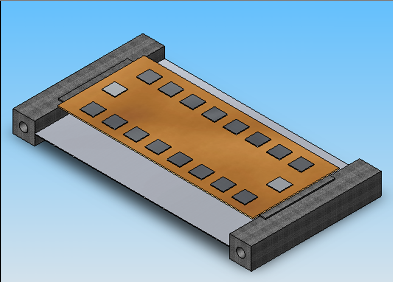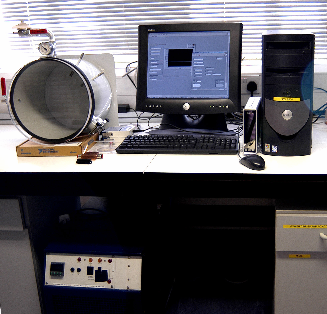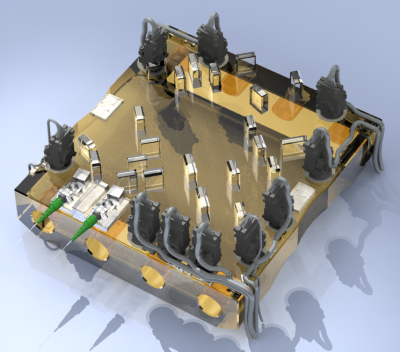

Various activities are currently taking place and have now been completed across TEOPS, generally involving links with external bodies both within academia and with industry.


The IGR in Glasgow is carrying out a research programme on the dissipation of optical coatings at temperatures between 6 K and room temperature. The mechanical dissipation of such coatings is expected to be an important source of thermal noise in the next generation of gravitational wave detectors, but the processes responsible are currently not well understood.
The experiments consist of measuring the mechanical loss of various coating layers applied to silicon cantilevers, and are carried out using several liquid helium cryostats. The thermal design and operation of the systems has benefited from the in-depth expertise in cryogenic systems available at the UK ATC. In addition, analysis programmes developed for characterising large numbers of detectors in astronomical instruments are being modified to improve the analysis of the results of these experiments.
The flight model optical bench for LISA Pathfinder
is currently under
construction in Glasgow. This is the result of an extensive design and
planning campaign, and has resulted in the IGR gaining space-flight
hardware heritage.
Work is also ongoing on the spaceborne gravitational wave detector,
LISA, and
these activities will be increased when the LISA Pathfinder
optical benches are delivered.

TEOPS is currently working on an STFC grant funded project for the European Extremely Large Telescope (E-ELT). The work, led by the UK ATC and including both Glasgow and Paisley universities aims to demonstrate that a combination of already available technologies, with some development, can address key problems currently facing large adaptive mirror technologies. Our goal is to show that our mirror portion will be scalable to, and representative of the technology required to build a large adaptive mirror for the European ELT. Glasgow University will make use of their extensive experience and particular knowledge of the hydroxide bonding process developed in the field of gravitational wave detection to enable the realisation of the proof of concept mirror. The recent extension of facilities at the University made possible by involvement in SUPA will enable us to verify the suitability of the mechanical construction of the proof of concept mirror, ensuring that it is fit for purpose.
TEOPS has carried out design and prototyping work for seismic and suspension isolation systems for both the European GEO and American Advanced LIGO gravitational wave detectors. The work was contracted to TEOPS by the two projects, and carried out by Calum Torrie.
TEOPS has also received a contract for Adam Woodcraft to provide consultancy for the thermal design for the SAFARI instrument on the SPICA space telescope, which is a European Space Agency mission under consideration for a possible launch in 2017.
Wire bonding for the detectors on the UK ATC led SCUBA-2 instrument on the James Clerk Maxwell Telescope was carried out using equipment in the experimental particle physics group in Glasgow.



